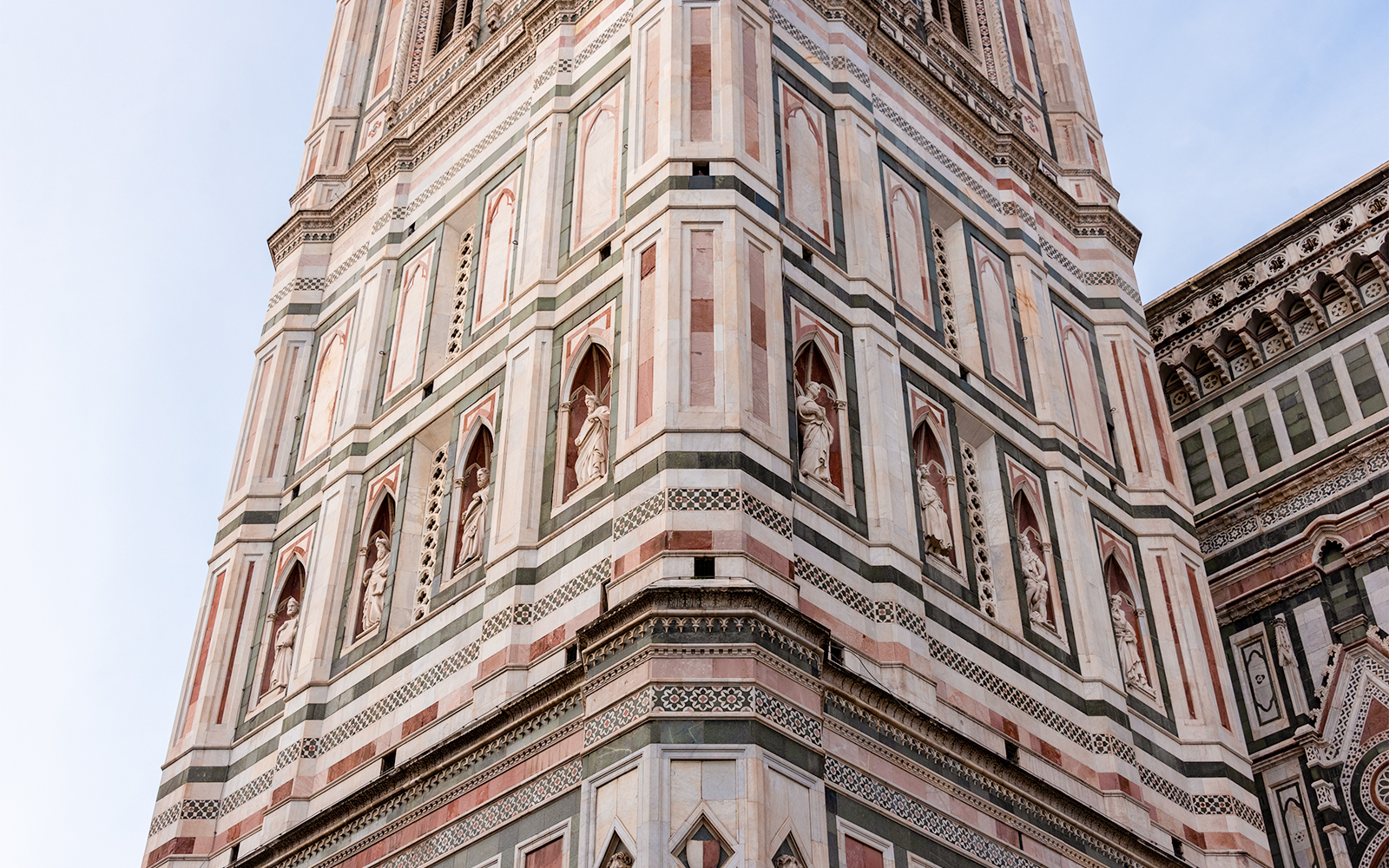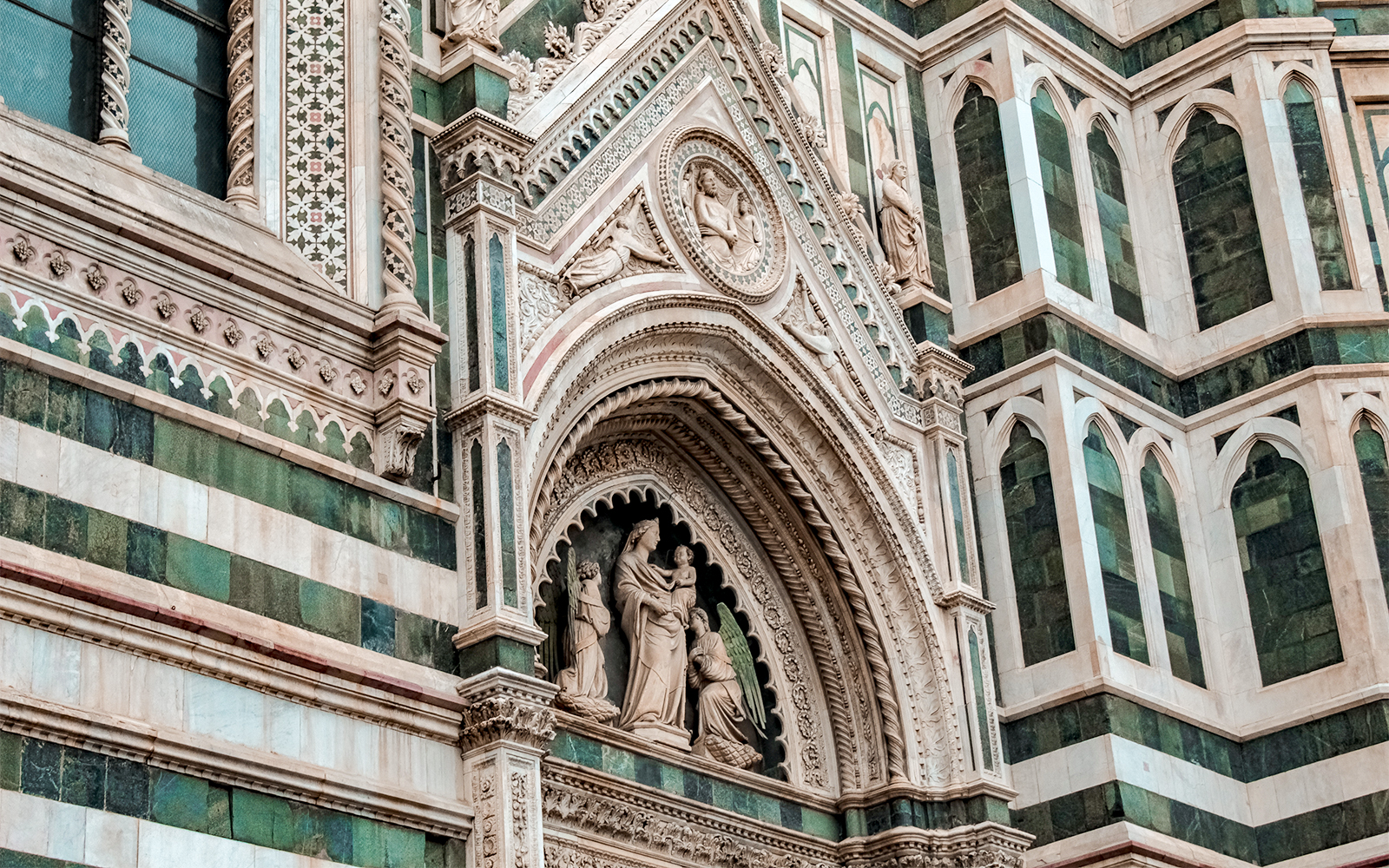If you've enjoyed the views from the top of the Florence Duomo, get ready for more stunning sights from Giotto's Bell Tower! This free-standing tower, part of the Florence Cathedral complex in Piazza del Duomo, offers another perspective on this beautiful city.
Giotto's Campanile stands next to the Basilica of Santa Maria del Fiore and the Baptistry of St. John. It's a prime example of Florentine Gothic architecture, designed by Giotto, with rich sculptures and colorful marble decorations.
For those who are fit enough, and aren't afraid of heights, climbing Giotto's Bell Tower is an experience you shouldn’t miss out on. You'll need to tackle 414 steps to reach the top, as there are no elevators or shortcuts. This climb isn't recommended for people with heart problems, vertigo, or claustrophobia.
For everyone else, it's a bit of a workout, but you can take it slow. There are terraces along the way where you can stop, take photos, rest, and catch your breath. The views from the top are worth every step!
Visiting Giotto's Bell Tower: Key Information



Opening Hours
🗓️Mon to Sun: 8:15am to 6:45pm
🕖Last-admission: 1 hr before closing
❌Closed on: 1 Jan, Easter, 8 Sept,
Christmas Day
Giotto’s Bell Tower: Quick Facts
Architect: Giotto di Bondone
Width: 14.45 m (47.41 ft)
Height: 84.7 m (277.9 ft)
Construction started: 1420
Completion date: 1436
Number of steps: 414
Recommended tickets to Giotto’s Bell Tower
Design and architecture of Giotto’s Bell Tower
Giotto's Bell Tower is a masterpiece of Florentine Gothic architecture, adorned with white, red, and green marble. The exterior is decorated with geometric patterns and stylized flowers, with the first two levels featuring exquisite sculptural details from the 14th and 15th centuries.
The Portal
At the base of the tower, you'll find the portal crowned by a tympanum adorned with sculptures.
Hexagonal Marble Panels
The first level features twenty-six hexagonal marble panels with bas-reliefs by Andrea Pisano and his collaborators, later completed by Luca della Robbia. These panels depict the creation of the Progenitors and various human activities.
Marble Tiles
Above the hexagonal panels is a series of twenty-eight marble tiles, shaped like lozenges, with bas-reliefs on blue majolica. These tiles represent celestial powers influencing human life, including the seven Planets, the seven Christian Virtues, the seven Liberal Arts, and the seven Sacraments.
Northern Wall Door
On the northern wall, there is a door that once led to an air connection with the Cathedral. This passage is adorned with a beautiful tympanum featuring the "Madonna del Solletico" by Andrea Pisano.
History of Giotto's Bell Tower
Giotto's Role and Design

- Transition of Leadership: After Arnolfo di Cambio's death in 1302, Giotto di Bondone was appointed Master of Works in 1334 at the age of 67.
- First Stone: Laid on July 19, 1334.
- Design Approach: Giotto used colored marble in geometric patterns, creating a painted effect. He incorporated chiaroscuro and perspective, differing from traditional Gothic designs.
- Progress: By his death in 1337, Giotto completed the lower floor with white, green, and red marble.
Artistic Contributions

- Marble Panels: The lower floor features bas-reliefs in hexagonal panels. The number seven, significant in Biblical terms, symbolizes human perfectibility.
- Attributed Artists: The panels' creators are uncertain, possibly by Giotto, Andrea Pisano, or their workshops.
Successors and Completion

- Andrea Pisano: Succeeded Giotto in 1343. He followed Giotto's design and added a second level with lozenge-shaped panels and two more levels with niches.
- Francesco Talenti: Replaced Pisano after the Black Death in 1348. He completed the top three levels with large windows but omitted Giotto's spire, resulting in a final height of 84.7 meters instead of the planned 122 meters.


